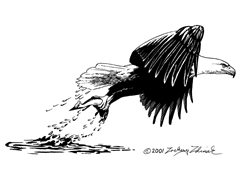Extension Wildlife & Fisheries Specialists Conferences

Triennial National Wildlife and Fisheries Extension Specialists Conference: 11th (2006)
Date of this Version
October 2006
Document Type
Article
Abstract
Aquatic plants are an important component of well functioning lake ecosystems. Plant abundance is influenced by sediments, nutrients and water clarity. Given the dominance of agriculture in Iowa, nutrients and soil lost from “leaky” watersheds combine to create ideal habitat for growth of aquatic plants in lakes and ponds and hasten eutrophication. Under these conditions, plant growth can become a nuisance and reduce recreation, especially shoreline angling and boating. These nuisance growths present special problems to lake managers and those interested in lake-based recreation. Given the complexity of the aquatic vegetation often found in lakes, there is no one long-term solution to their management although grass carp and herbicides have been used with that goal. The best solution to a lake’s specific vegetation problem will be a combination of preventative, physical, biological and chemical options tuned to that specific lake’s environmental conditions and fishery needs. Development of a strategy to address the control of nuisance aquatic vegetation with the ultimate goal of producing a set of BMPs is needed to manage plants in Iowa’s ponds and lakes. This information will provide lake managers with the best methods and techniques to sample, assess, and manage nuisance aquatic vegetation. Plans developed from these strategies will link critical watershed characteristics, lake bathymetry, water quality, and density and diversity of aquatic plants to management options that benefit fish and fishing. Considerations will include the cost and benefit of various alternatives and the likelihood for success. This project was initiated July 2006 and continues through June 2009.


Comments
Published in Proceedings, 11th Triennial National Wildlife & Fisheries Extension Specialists Conference, October 14-18, 2006, Big Sky, MT.